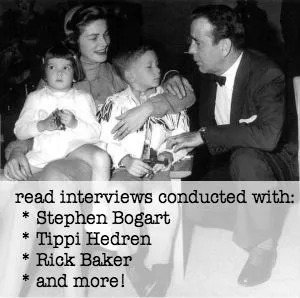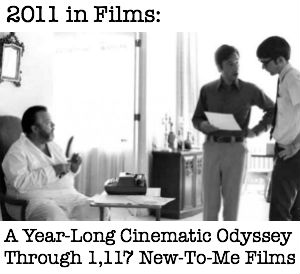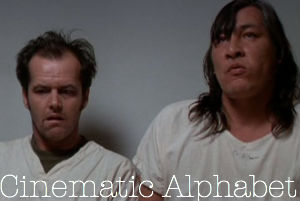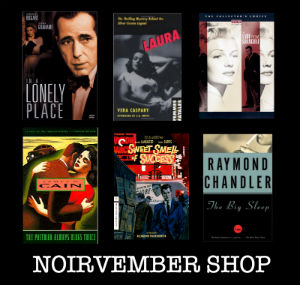Female Filmmaker Friday: Desert Hearts, 1985 (dir. Donna Deitch)
In 2014, I launched a series called Female Filmmaker Friday, where I wrote about a film directed by a woman almost every Friday for almost the entire year. This in part inspired my A Year With Women project where I only watched films directed or co-directed by women for the entirety of 2015. In 2016, Female Filmmaker Friday made a brief comeback as a podcast, though that was also short-lived. Finally, I am excited to announce that I will be bringing Female Filmmaker Friday back as a regular feature on this blog. For its auspicious return I have chosen one of my all-time favorites, one that has become far more readily available in the last few years: Donna Deitch’s Desert Hearts.

Film marketing always fascinates me (see, also the post I wrote a few years ago about Susan Seidelman’s She-Devil). Above is the original poster for Desert Hearts and the poster Janus made for their amazing restoration. In the first poster there is so much drama! It makes you think the film is going to be a love quadrangle. The second poster is much more in line with the film’s true spirit: two women heading down the same path, one slightly unsure where she’s headed. I’m so grateful for the Janus restoration – which brought the film back into theaters for people to see, and then released it on a top-notch DVD/Blu-ray Criterion edition. I first stumbled across this movie on Netflix Instant back when they still had an amazing selection of 80s hidden gems. If you’ve never seen this film beware there are spoilers ahead! You can rent the film on Amazon Prime and come back after, or go full speed ahead and be spoiled. Either way, I hope you give this film a chance to work its magic around your heart.

Set in the Nevada desert just outside Reno in 1959, the film follows 35-year-old Columbia University professor Vivian Bell, who has come to set up residency for a divorce. The book, Desert of the Heart by Jane Rule, spends a lot more time explaining the troubles in Vivian’s marriage, as well as several other subplots. This is a loose adaptation, and I like the way the film makes it less about her past and more about her experiences once she arrives in Nevada.

Which brings us to Cay, played by the radiant Patricia Charbonneau, who gets my favorite character introduction of all time. If I didn’t already know I liked women this intro would do it for me (like it does for our unsuspecting protagonist Vivian). Actually, I saw this movie for the first time when I was in grad school right around the time I was coming to terms with my own pansexuality. I think this movie has helped a lot of women understand themselves better. There’s even a great joke about it in Desiree Akhavan’s latest film The Miseducation of Cameron Post. You could tell who in the audience for that film had seen Desert Hearts and who had not.

Vivian is played by Helen Shaver, who I had first seen in 1996’s direct-to-video smash Tremors 2: Aftershocks, in which she plays an ex-Playboy centerfold turned geologist (yes, really). It was a shock seeing her play such a completely different, reserved kind of woman. Vivian feels very closed off, and through a combination of her stiff suits and Shaver’s body language, she feels almost as if she has folded into herself.

This, of course, begins to change as she spends time with Cay. There is an immediate spark between these two women. We find out early on that Cay is into women via some of the other gossiping guests at the ranch where Vivian is living while waiting on her divorce, as well as by her own confidant confession. Vivian is unsure of her own feelings, but we see their connection both in how they interact, but also through some stunning editing. This crossfade above is one of my favorite shots ever. They are very much on each other’s mind when they are together and apart.

Breaking away from Cay and Vivian’s storyline for a hot second to talk about side character Silver (played by Andra Akers). She is Cay’s co-worker and they are surprisingly intimate (pretty sure they’re ex-lovers). She’s engaged to and will eventually marry a man as the film progresses (he’s even in this scene with them in the tub!). Is she bisexual and/or pansexual? I think very much yes. Is she marrying the man because she’s tired of being alone and wants the relative comforts that being a (heterosexually) married woman allow? Perhaps. Or perhaps she really, truly loves him. I’ve never quite landed on a solid interpretation of this storyline. I’d love to hear your thoughts!

Back to Cay and Vivian. I love the scene where they are shopping for some new clothes. What is more intimate than clothes shopping??? (Okay don’t answer that). Here we see Vivian opening up, smiling even! Cay is reflected in the mirror, showing us how Vivian is beginning to see herself reflected in this woman. She is finding herself for the first time in her life.

After attending an engagement party (and making eyes at each other all night), Cay impulsively drives Vivian out to Lake Tahoe (which could endanger her divorce if she stays out of Nevada for too long). Some intense conversation ensues and then we’re treated to one of cinema’s greatest kisses. It’s tender and passionate and hot and in the rain! It’s everything you want in a cinematic smooch. It also shakes Vivian to the core.

Forced to relocate by her landlady (and Cay’s aunt), Vivian moves across town and in true romance fashion Cay follows her. Cay may be younger than Vivian, but she’s been around long enough to know that you don’t feel this kind of connection with many people and she’s not ready to lose it just yet. I love the way Deitch films this sequence. Cay is a shadow of the self she was before; she will fade into herself if Vivian doesn’t let her back in.

Once’s Vivian lets her into her new room, we get one hell of a seduction scene. Cay’s body language changes completely. It’s open and inviting. Vivian remains constricted, embarrassed and unsure how to feel. After finally embracing her instincts and kissing Cay she quips, “I don’t usually feel this way at 11 o’clock in the morning.” Everything’s going to be different from this moment on.

What follows is a very hot, yet tastefully filmed sex scene. Is their discovery of each other’s body a little more orchestrated than it would be in real life? Sure. There are female bodies on display and female pleasure abounds, but it is never shot in an objectifying way. This scene was shot on the second to last day of shooting, with only the cinematographer Robert Elswit (who would later go on to win an Oscar for There Will Be Blood) and a boom mic operator. Both Charbonneau and Shaver filmed the scene completely naked and Shaver later stated the experience was “profoundly intimate.” The distributor, The Samuel Golwyn Company, had asked Deitch to trim the scene, but she refused, becoming the first lesbian director to have a film with an explicit sex scene between two women distributed to mainstream theaters.

As this is a romance, there must be one final conflict before the film can come to an end. After spending the day in bed together, the new lovers emerge for dinner. This scene begins as a sweet, postcoital meal. They are intimate in their gazes, glances, and occasionally quick touches. If this were a heterosexual couple, they could broadcast their intimacy loud and clear and no one would think twice about it. At first Cay and Vivian enjoy sharing their secret world, but eventually Vivian begins to have doubts. Can they last like this? Is this kind of life worth the pain?

For a movie about divorce set in a town made for quickie divorces, there are a lot of weddings happening around Cay and Vivian. First reunited at the wedding of a Silver, Cay later meets up with Vivian after her divorce is finalized. This sequence is filled with brides headed towards wedded bliss (including this amazingly stylish extra). I particularly love this shot; Vivian is leaving the courthouse after receiving her divorce, just as a couple heads up the same steps towards their future. Vivian is back in her fitted suit – but she has lost her hat. Cay sports some Marlene Dietrich inspired pants.
—————————— MAJOR SPOILER AHEAD ——————————

Which brings us to Cay and Vivian’s future and why Desert Hearts is considered the first lesbian film with a happy ending. Vivian is still unsure of herself, but she cannot deny her feelings towards Cay, who is (rightfully) rather put off after Vivian’s continual indecision. But then we get one of the all-time great final cinematic exchanges:
Vivian: Come with me. Ride with me to the next station.
Cay: What are we gonna get settled in 40 minutes?
Vivian: I’ll talk fast.
Cay: Send me a postcard when you get there. What is it you want?
Vivian: Another 40 minutes with you.
We know the road will be bumpy for these lovebirds because they’re stuck in mid-century America, but hey at least they’ll get another unforgettable 40 minutes together! Actually, this ending reminds me a bit of James Ivory’s Maurice (made in 1987, but based on a novel written decades earlier by E.M. Forster, and set in the 1910s). A happy queer ending in a time when many queer people were still fighting for basic rights (oh wait, that’s still happening) gives us something intangible, but also invaluable: hope.
Posted on January 4, 2019, in Female Filmmaker Friday and tagged Andra Akers, Criterion Collection, Desert Hearts, Donna Deitch, Female Filmmaker Friday, Helen Shaver, Jane Rule, Janus, Patricia Charbonneau, Robert Elswit. Bookmark the permalink. Leave a comment.

















Leave a comment
Comments 0